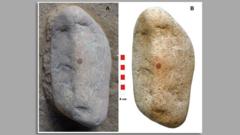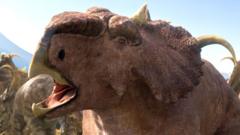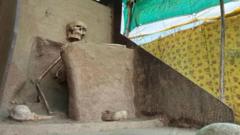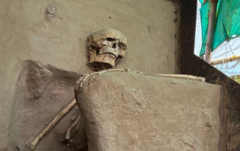A recent study indicates that remains found in a southwestern English mass grave demonstrate signs of violent death and possible cannibalistic rituals, shocking the archaeological community.**
Unearthing the Past: Horrific Cannibalistic Rituals Revealed in Bronze Age Grave**

Unearthing the Past: Horrific Cannibalistic Rituals Revealed in Bronze Age Grave**
New evidence unveils the gruesome fate of 37 individuals in a Bronze Age mass grave in England, suggesting they were victims of both murder and cannibalism.**
The discovery of a mass grave at Charterhouse Warren in southwest England has taken researchers by surprise, revealing a gruesome chapter in prehistory. For over five decades, the skeletal remains were largely overlooked, dating back to between 2210 and 2010 B.C. Initial findings in the 1970s indicated mere burial practices, but recent research highlights a darker narrative: evidence points to the slaughter of at least 37 individuals who were likely consumed post-mortem.
Professor Rick Schulting, who spearheaded the study recently published in the journal Antiquity, stated, “It’s taken us all aback. It was completely unexpected, totally atypical for the period and for almost all of British prehistory.” The remains discovered in the 50-foot ditch showcase severe trauma, including broken bones and deep cuts, suggesting a scenario that exceeds ordinary burial rituals.
Archaeologists found the skeletal fragments to be spread throughout the site, with sharp evidence of butchery, indicating potential cannibalistic practices after the violent killings. The original excavation, conducted by cavers near Bristol, left much to be desired in terms of documentation, leading these findings to be all the more shocking.
As Schulting recalls, “The grave had been practically forgotten in the archaeological world,” until now, providing a fresh look into the cultural practices behind such a tragic and morbid event. This new understanding of the Bronze Age era accentuates the complex behaviors of our ancestors, pushing archaeologists to rethink historical narratives surrounding human violence and ritualistic behaviors.
Professor Rick Schulting, who spearheaded the study recently published in the journal Antiquity, stated, “It’s taken us all aback. It was completely unexpected, totally atypical for the period and for almost all of British prehistory.” The remains discovered in the 50-foot ditch showcase severe trauma, including broken bones and deep cuts, suggesting a scenario that exceeds ordinary burial rituals.
Archaeologists found the skeletal fragments to be spread throughout the site, with sharp evidence of butchery, indicating potential cannibalistic practices after the violent killings. The original excavation, conducted by cavers near Bristol, left much to be desired in terms of documentation, leading these findings to be all the more shocking.
As Schulting recalls, “The grave had been practically forgotten in the archaeological world,” until now, providing a fresh look into the cultural practices behind such a tragic and morbid event. This new understanding of the Bronze Age era accentuates the complex behaviors of our ancestors, pushing archaeologists to rethink historical narratives surrounding human violence and ritualistic behaviors.




















